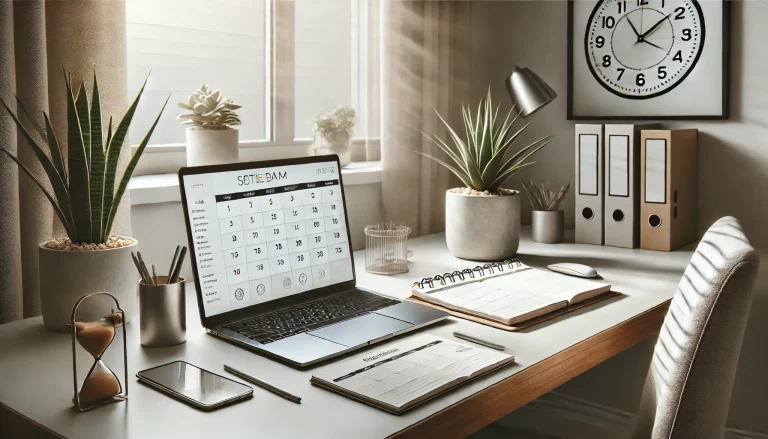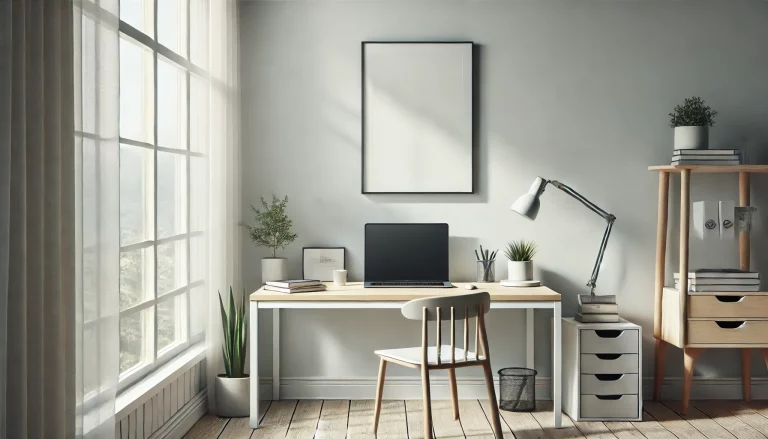

In today’s world, we’re constantly bombarded with information, tasks, and distractions. It can feel like there’s never enough time in the day to accomplish everything on our to-do lists. Minimalism offers a way to simplify our lives and streamline our approach to work, helping us focus on what truly matters and improve productivity.
In this article, we’ll explore how embracing minimalism can boost productivity by eliminating distractions, organizing your environment, and creating more space for focused work and meaningful tasks.
A cluttered workspace can lead to distractions, stress, and reduced focus. Minimalism encourages you to declutter your workspace, creating an organized, clean, and inspiring environment that enhances productivity and mental clarity.
How to simplify your workspace:
A simplified workspace helps you maintain focus, reduce stress, and increase your overall productivity.
Multitasking can be tempting, but studies have shown that it can actually reduce efficiency and lead to mistakes. Minimalism encourages you to focus on one task at a time, allowing you to give your full attention to each project and complete it with greater quality and efficiency.
How to focus on one task:
By focusing on one task, you’ll complete your work more efficiently and with greater accuracy.
A complex, overloaded daily routine can lead to mental fatigue and a lack of focus. Minimalism encourages you to simplify your routine, eliminating unnecessary steps and focusing on the essential tasks that align with your goals.
How to streamline your daily routine:
A simplified routine reduces decision fatigue and makes it easier to focus on what matters.
With technology being a constant presence in our lives, it’s easy to accumulate digital clutter that distracts us and reduces productivity. Minimalism encourages you to declutter your digital life, reducing the number of apps, emails, and notifications that pull your attention away from important tasks.
How to declutter your digital life:
By reducing digital clutter, you’ll minimize distractions and free up mental energy for more important tasks.
Minimalism encourages us to simplify our goals by focusing on what truly matters and aligns with our values. By narrowing your focus, you can make steady progress toward your most important goals, rather than getting overwhelmed by too many competing priorities.
How to simplify your goals:
Simplifying your goals helps you focus your time and energy on what’s most important, leading to greater productivity and satisfaction.
One of the key principles of minimalism is learning to say “no” to things that don’t serve your goals or values. Saying yes to every request or invitation can overwhelm your schedule and prevent you from focusing on your most important tasks. Minimalism encourages you to say no to distractions and non-essential commitments that take up your time and energy.
How to embrace the power of “no”:
By learning to say no, you can protect your time, reduce overwhelm, and focus on what matters.
Minimalism isn’t just about simplifying work-related tasks — it’s also about creating a healthy work-life balance. By prioritizing both productivity and personal well-being, you can achieve greater overall satisfaction and avoid burnout.
How to optimize work-life balance:
Balancing work and personal time helps you stay productive without sacrificing your health or happiness.
Mental clutter can be just as distracting as physical clutter. Minimalism encourages us to reduce mental clutter by simplifying our thoughts, letting go of unnecessary worries, and focusing on the present moment.
How to reduce mental clutter:
Reducing mental clutter allows you to work more efficiently and with greater focus.
The 80/20 Rule, or the Pareto Principle, suggests that 80% of our results come from just 20% of our efforts. Minimalism encourages us to focus on the 20% of activities that produce the most significant results, eliminating the 80% of tasks that are less productive.
How to apply the 80/20 Rule:
By focusing on high-impact tasks, you can achieve more with less effort.
Minimalism is not just about reducing physical possessions — it’s about simplifying all aspects of your life to create more space for what matters most. By decluttering your environment, streamlining your goals, and eliminating distractions, you can improve focus, boost productivity, and achieve more with less stress.
Remember, less is more when it comes to productivity. Embrace minimalism to live a more focused, intentional, and productive life.